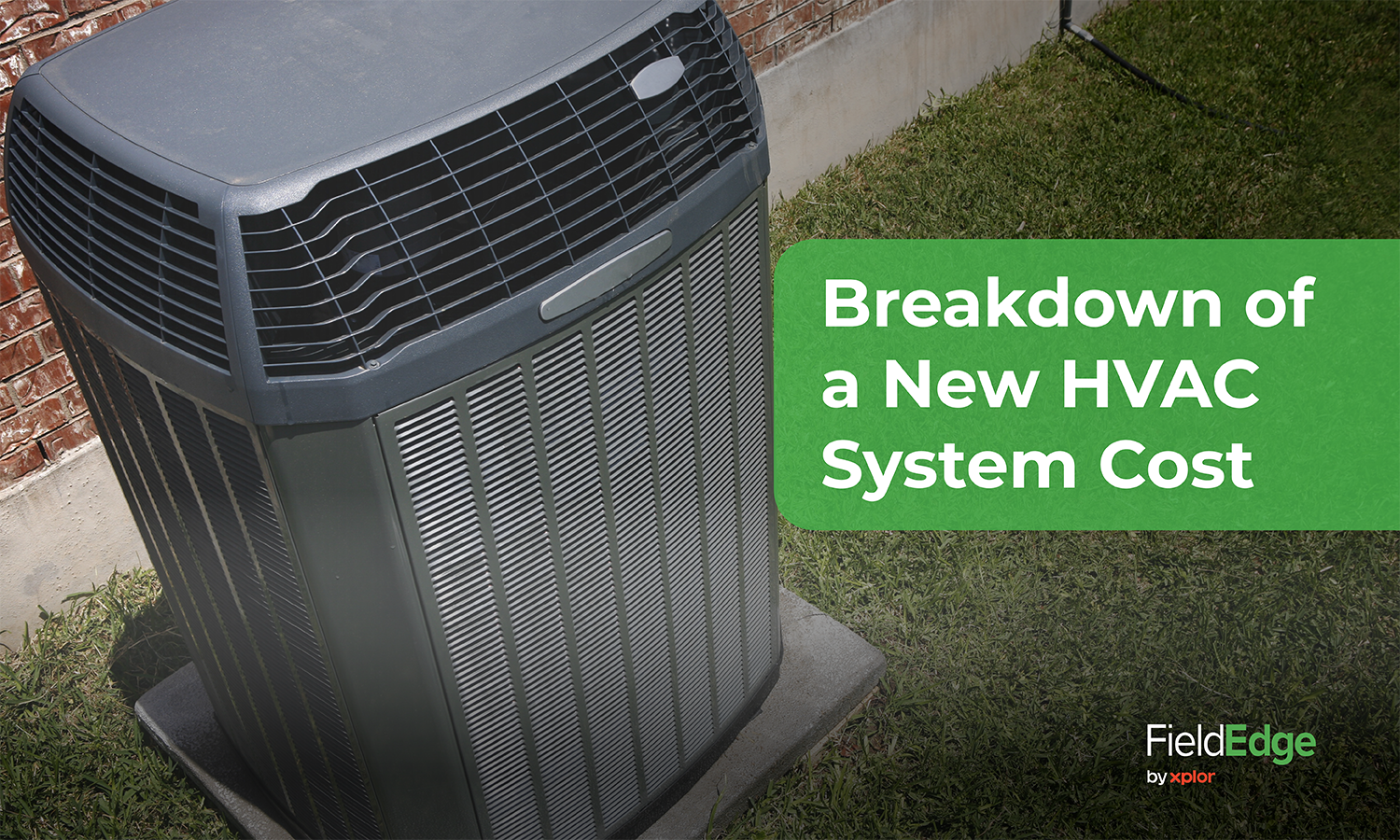Considering installing a new HVAC system for a customer but are unsure about a new HVAC system cost? Understanding the factors that contribute to the overall expense can help you make informed decisions for your HVAC company and pricing structure.
In this blog post, we’ll:
- Explore the breakdown of a new HVAC system cost
- Provide expert insights to help you navigate pricing structure
A lot has changed in the last few years concerning new costs and regulations surrounding a new HVAC system cost. But no worries–we’ll bring you up to date!
Factors Affecting New HVAC System Cost
Before diving into the specifics of a new HVAC system cost, let’s take a look at a few key influential factors that’ll help you set up your pricing:
System Size and Capacity
The size and capacity of the HVAC system play a significant role in determining the overall cost. Larger systems with higher capacity are typically more expensive than smaller units, as they require more materials and labor for installation.
Factors such as the square footage of the property, insulation levels and climate considerations also impact system sizing and cost.
Equipment Efficiency and Features
The efficiency rating of the HVAC equipment, such as the SEER rating (i.e. Seasonal Energy Efficiency Ratio) for air conditioners and the AFUE (i.e. Annual Fuel Utilization Efficiency) for furnaces, can impact the cost.
High-efficiency equipment may have a higher upfront cost but can result in long-term energy savings for the homeowner. Additionally, advanced features such as variable-speed motors and two-stage compressors may contribute to higher equipment costs but offer improved comfort and energy efficiency.
System Components and Accessories
Additional components and accessories can add to the overall cost of the HVAC system. Examples include:
- Programmable thermostats
- Zoning systems
- Air purifiers
- Humidifiers
These features enhance comfort and indoor air quality but come with additional expenses.
When discussing options with your customers, highlight the benefits of these accessories and how they can enhance their overall HVAC experience.
Ductwork Installation or Replacement
The condition of the existing ductwork and the type of installation or replacement can significantly affect the cost of a new HVAC system. Properly sized and sealed ductwork is essential for optimal system performance and efficiency.
Factors such as duct material, insulation and accessibility can impact HVAC installation costs. Conducting a thorough inspection of the ductwork and addressing any issues upfront can help prevent costly surprises during the installation process.
Labor and Installation Costs
Labor and installation costs vary depending on factors such as:
- Installation complexity
- Local labor and material rates
- Additional services required (e.g. electrical work, permits, etc.)
Hiring experienced HVAC professionals ensures proper installation and reliable performance of the system.
Plus, by providing transparent pricing and clear communication, your customers will know what to expect during the installation process.
Warranty and Maintenance Plans
Some HVAC systems come with manufacturer warranties that cover parts and labor for a certain period, while others may offer extended warranty options for additional protection.
Additionally, offering maintenance plans to customers can provide peace of mind and help prolong the lifespan of the HVAC system. Discuss warranty options and maintenance plans with your customers to emphasize the value these warranties provide in protecting their investment.
Breakdown of a Typical Costs
Now that we’ve discussed the factors influencing HVAC system costs, let’s break down the average expenses associated with installing a new system:
Equipment Cost
- The cost of the HVAC equipment itself, including the air conditioner, furnace, heat pump or boiler.
- Higher efficiency equipment may have a higher upfront cost but can result in long-term energy savings.
Installation Costs
- Labor and installation fees charged by HVAC contractors for installing the new system, including any necessary ductwork modifications or replacements.
Additional Components and Accessories
- Costs associated with optional components and accessories, such as thermostats, zoning systems, air purifiers and humidifiers.
Ductwork Installation or Replacement
- Costs for installing or replacing ductwork, including materials and labor.
Permit and Inspection Fees
- Fees associated with obtaining permits and scheduling inspections from local authorities to ensure compliance with building codes and regulations.
Warranty and Maintenance Plans
- Costs for manufacturer warranties, extended warranty options and maintenance plans offered by HVAC companies to customers.
Average Cost of a New System
So what is the average cost of a new heating and cooling system in 2024? As you can see there are many factors involved so the actual average price varies. Expect to pay an average of $7,500, though costs range from $5,000 to $12,500. If new ductwork or a filtration system is needed, the cost could rise to $22,000.
Book a FREE demo of FieldEdge today to experience how the best software will TRANSFORM your business growth!
Knocking Out a New HVAC System Cost
Now, you have a better idea of the cost of a new HVAC system as well as the many factors that go into it. As HVAC professionals, it’s essential to provide transparent pricing and educate customers about the factors influencing those costs.
Here are a few things to keep in mind when considering your pricing:
- Varying customer needs go into the overall cost of a new system.
- Communicate clearly with customers, offer options that meet their needs/budget and provide exceptional service throughout the installation process.
- Maintenance plans benefit both your HVAC business and the customer
By understanding the breakdown of a new HVAC system cost, you can better assist your clients in making informed decisions and ensure their satisfaction with the installation process and performance of their new system.
Related: 4 Proven Strategies on How To Increase HVAC Sales




